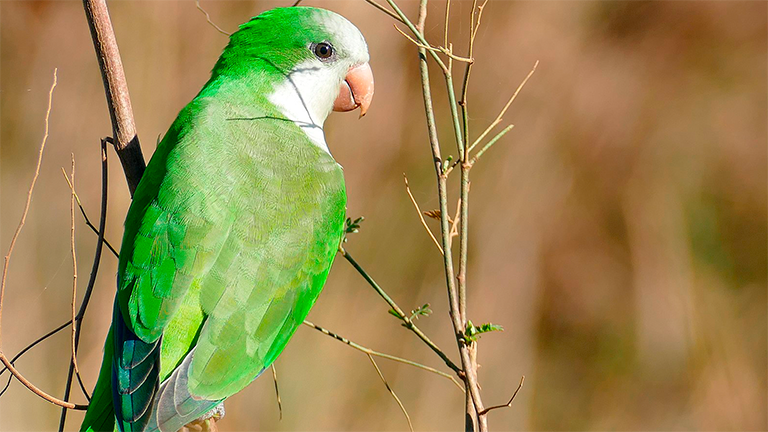Of course, in the context of these topics, citizen science has a lot to say. One of the seminars on citizen science was ‘Engaging with nature to protect our environment.’ This workshop focused on explaining how citizen science can be an ally to monitor invasive alien species (IAS). Tim Woods, a Cos4Cloud member and the communications and community officer at the European Citizen Science Association (ECSA), was one of the speakers.

During his talk, Tim presented some of the citizen observatories that participate in the Cos4Cloud project and have projects that collect invasive species observations. One of the examples given was Pl@nNet, which reports invasive plant species all over the world. Another example was Natusfera, which encompasses several projects that monitor specific invasive species, such as the brown marmorated stink bug (Halyomorpha halys) or monk parakeets (Myipositta monachus). The platform also offers INVADERS, a guide to the invasive species present in the National Parks Network. The citizen observatoriesiSpot and Artportalen also monitor invasive species within their platforms.
Regarding the next steps to improve IAS reporting, Tim explained how “the Cos4Cloud project can support the citizen observatories to monitor invasive species by increasing the data quality and quantity and improving citizen scientist motivation”.
For example, the experts’ portal service will make it easier to identify lesser-known species. The data use notification service will be essential to engage citizen scientists and recognize their contribution. And the location-based species prediction service will be useful for detecting invasive species, by showing potential species to be observed in a specific area.
The workshop also featured Ana Cristina Cardoso, the Action Leader of European Alien Species Information Network (EASIN),one of the most significant initiatives at the European Commission. She explained how EASIN facilitates access to updated information on alien species through web services. EASIN also recognizes the vital role that citizen science plays in IAS knowledge and monitoring. On the one hand, by creating awareness of IAS among the public; and, on the other hand, by contributing to reports of these species.
Lourdes Lázaro Marín, who is responsible for the citizen science programme of the LIFE INVASAQUA project at the Centre for Mediterranean Cooperation – IUCN in Spain, and Branka Trčak, responsible for the citizen science project APPLAUSE in Ljubljana, were also panelists at this workshop.

You can watch the full webinar here.
Towards a better European governance
The European Week of Regions and Cities is an annual four-day event during which cities and regions make workshops and presentations to showcase their capacity to create growth and jobs, implement European Union cohesion policy, and prove the importance of the local and regional level for good European governance. All society sectors can participate in the event (project managers, researchers, citizens, private companies, governments, journalists, etc.), enriching the presentations and workshops with many different perspectives and topics.

















